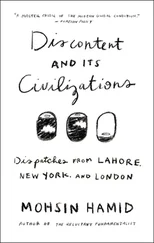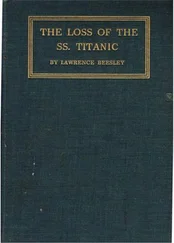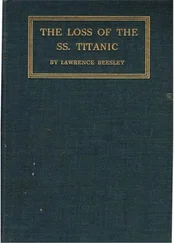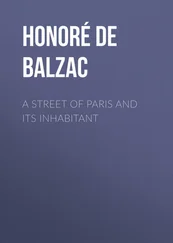Henry Edwards - Old and New Paris - Its History, Its People, and Its Places, v. 2
Здесь есть возможность читать онлайн «Henry Edwards - Old and New Paris - Its History, Its People, and Its Places, v. 2» — ознакомительный отрывок электронной книги совершенно бесплатно, а после прочтения отрывка купить полную версию. В некоторых случаях можно слушать аудио, скачать через торрент в формате fb2 и присутствует краткое содержание. Жанр: foreign_antique, foreign_prose, Путешествия и география, на английском языке. Описание произведения, (предисловие) а так же отзывы посетителей доступны на портале библиотеки ЛибКат.
- Название:Old and New Paris: Its History, Its People, and Its Places, v. 2
- Автор:
- Жанр:
- Год:неизвестен
- ISBN:нет данных
- Рейтинг книги:4 / 5. Голосов: 1
-
Избранное:Добавить в избранное
- Отзывы:
-
Ваша оценка:
- 80
- 1
- 2
- 3
- 4
- 5
Old and New Paris: Its History, Its People, and Its Places, v. 2: краткое содержание, описание и аннотация
Предлагаем к чтению аннотацию, описание, краткое содержание или предисловие (зависит от того, что написал сам автор книги «Old and New Paris: Its History, Its People, and Its Places, v. 2»). Если вы не нашли необходимую информацию о книге — напишите в комментариях, мы постараемся отыскать её.
Old and New Paris: Its History, Its People, and Its Places, v. 2 — читать онлайн ознакомительный отрывок
Ниже представлен текст книги, разбитый по страницам. Система сохранения места последней прочитанной страницы, позволяет с удобством читать онлайн бесплатно книгу «Old and New Paris: Its History, Its People, and Its Places, v. 2», без необходимости каждый раз заново искать на чём Вы остановились. Поставьте закладку, и сможете в любой момент перейти на страницу, на которой закончили чтение.
Интервал:
Закладка:
The Edict of Nantes formally countenanced the reformed religion even whilst forbidding its adherents to assemble for worship within five leagues of Paris. The meeting-place chosen in 1599 by the Protestants was the Château de Grigny, residence of the seigneur Josias Mercier des Bordes, a distinguished scholar as well as a councillor of state. Several times, on returning from Grigny, the Protestants were assailed by the populace, acting at the instigation of such fanatics as the aristocratic capuchin, Ange de Joyeuse. It was found necessary to erect extra gibbets for those who attacked worshippers returning from Grigny.
This place of assembly, however, was too remote, and at the end of six months the king transferred it to Ablon-sur-Seine. Even Ablon proved inconveniently distant, although it was nearer the capital than the edict permitted. The difficulties and dangers of the journey to this spot were great. The Protestants often went by water, and several were accidentally drowned. A petition presented to the king set forth that forty infants had died through having been carried in winter to baptism at Ablon. At length the king found that his own Protestant ministers could not render their duties to God and to himself on the same day; and Henry IV., yielding to the influence of Sully and of Calignon, assigned to the Protestants of the capital, as their place of meeting, Charenton, two leagues distant.
From that time the street and the faubourg of Saint-Antoine were traversed on Sunday by crowds of Huguenots, in carriages, on horseback, or on foot; and for their protection two fresh gibbets had to be erected, one in the name of the Lieutenant of the Town, the other in that of the Chief of the Watch. Many of the Huguenots now went to Charenton by water. On Sundays and holidays the river was covered with boats of all kinds, conveying, in the words of a Catholic poet of the time,
“La flotte des brebis galeuses
Qui vont au presche à Charenton.”
The lord of the manor, notwithstanding the increased value given to his property by the arrival of the Huguenots, many of whom established themselves in the neighbourhood of their one recognised place of worship, protested constantly against the toleration accorded to them.
Often the Huguenots returning from Charenton, where on Sunday they would pass the entire day, were attacked; on which an appeal was made to the king, who took the part of his former co-religionists. The death of Henry IV. was a terrible blow to the French Protestants, who were now at the mercy of the Jesuits, of Catherine de Médicis, and of her Florentine advisers, such as the Concinis. The principal Protestant pastors deplored aloud from the Charenton pulpit the death of the king, who had endeavoured to bring about an understanding, if not perfect harmony, between his subjects of both religions, and whose wise tolerance had been the cause of his death. Ravaillac was a fanatic who, in striking his murderous blow, had been prompted only by his hatred of Protestantism and of the king’s concessions to the Protestants. The temple constructed at Charenton was pillaged and burnt in 1621. In 1624 it was rebuilt on a larger scale; and the Protestant historians note that it was approached through an avenue of shops, where books of all kinds were sold, without any objection on the part of the consistory, which, although very strict in its rules for the conduct of the Protestants, did not enforce the Judaic observance of the Sabbath, “as practised,” says a writer of the time, by the Protestants of Scotland and England.
Many illustrious persons still belonged to the reformed religion. But gradually the aristocratic families were bought over to the other side; and the Jesuit Garasse declared that the church of the Protestants would soon be a church of beggars. The unhappy Protestants did not in any case neglect their poor; and as it was found impossible to keep priests and monks out of the hospitals, which were constantly invaded by them, the chiefs of the reformed religion established hospitals in secret places, which, however, were closed as soon as Catholic clergy or the public discovered them. In 1600 the Parliament of Paris interdicted these charitable establishments by a formal decree.
The first decisive step towards the revocation of the Edict of Nantes was the suppression of all representation of the Protestants in the Parliaments of Paris and of Normandy. In connection with this step Louis XIV. received, though only as a matter of form, Ruvigny, deputy general of the reformed church, and the eloquent pastor du Bosc, of whom, after listening to the exposition of his claims, the king said to the queen: “He is the best speaker in my kingdom.” He suppressed, all the same, the only guarantee of justice remaining to the French Protestants.
The Protestant consistories were now required to admit into their assemblies representatives of the Catholic clergy, whose mission it was to read to them a so-called pastoral warning. Already the minister Louvois had attempted to enforce conversion to the Roman Catholic religion by quartering upon the unfortunate Protestants dragoons, whom, if they remained faithful to their religion, they had for an indefinite time to support. The so-called “dragonnades” were for the most part confined to the provinces. Paris was exempted from them, lest the king himself should be scandalised by the scenes they well might lead to. Louvois had sworn to extirpate the “dangerous heresy,” and he assured the king that he was doing so by peaceful means.
Four days after the signing of the edict, and on the very day of its formal registration, the Protestant temples were demolished by the mob, who could not wait for official measures to be taken against the buildings already condemned. The cemetery adjoining the temple of Charenton was profaned, and the tombs of the Protestants violated, as, a century later, were to be violated the tombs of the Catholic kings. Notices were served on the chiefs of the Protestant families, commanding them, in the name of the king, to change their religion. Of the recalcitrants large numbers were sent to the Bastille, while the members of the consistory were exiled by “lettres de cachet.” Protestants who had been domiciled in Paris for less than a year were ordered to quit the capital, and the pastors in general had a fortnight given to them in which to leave France; while Claude, the most renowned amongst them, was ordered to quit French territory within twenty-four hours, being meantime watched by one of the king’s servants. In the months of October, November, and December, 1685, no less than 1,087 members of the reformed church emigrated from Paris, 1,098 abjured their religion, while 3,823, after refusing to abjure, still remained in the city. The emigration had been arranged beforehand by Claude and his colleagues. A constant service of guides was kept up between Paris and the frontiers, though it was death for those who had once quitted Paris to return. The exiles took flight at midnight on market days, when it was easier to pass the barriers. Notwithstanding the menace of capital punishment, some half-dozen Protestant ministers returned to Paris a year after the revocation in order to do secret duty among their co-religionaries remaining in the capital. Some were sentenced to imprisonment for life in the isles of Sainte-Marguerite, others were shut up in the Bastille, and one of them, the celebrated Claude (Claude Brousson, by his full name), was hanged. Meanwhile some of the Protestants who still ventured to stay at Paris continued services at the English Embassy, or at the legation of the United Provinces. Instead of one chaplain the legation of the Dutch Republic maintained two. But an edict was soon passed forbidding French Protestants to attend worship in the chapels of any of the foreign ministers.
Protestantism was not again to be tolerated in France until 1787, two years before the Revolution, many of whose reforms (including the abolition of torture) had been anticipated by the Monarchy, already condemned.
Читать дальшеИнтервал:
Закладка:
Похожие книги на «Old and New Paris: Its History, Its People, and Its Places, v. 2»
Представляем Вашему вниманию похожие книги на «Old and New Paris: Its History, Its People, and Its Places, v. 2» списком для выбора. Мы отобрали схожую по названию и смыслу литературу в надежде предоставить читателям больше вариантов отыскать новые, интересные, ещё непрочитанные произведения.
Обсуждение, отзывы о книге «Old and New Paris: Its History, Its People, and Its Places, v. 2» и просто собственные мнения читателей. Оставьте ваши комментарии, напишите, что Вы думаете о произведении, его смысле или главных героях. Укажите что конкретно понравилось, а что нет, и почему Вы так считаете.












